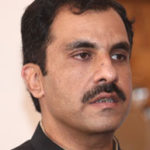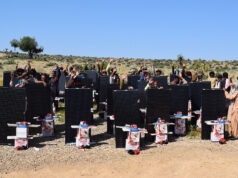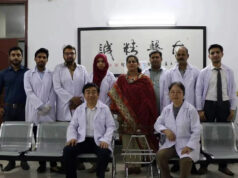 Muhammad Jahangir Kakar
Muhammad Jahangir Kakar
Balochistan Education Sector Plan (BESP) is in the last year of its operative-life. Against the over ambitious ends it set start with, the Plan has positive offerings. The Institutional reforms, the introduction of Education Information Management System in education sector, the tool of Real Time School Monitoring and the Continuous Professional Development Program are some of the many fruits the BESP has shattered down.
Education Sector in Balochistan, like all other sectors, has been a victim of ad-hocism. Short sighted, ill hatched and persons’ specific development designs have driven the wheels of Education in Balochistan. The coming of BESP amid such gloomy scenario was more than blessing.
The BESP was carved in 2013 and it was for the first time in the history of Balochistan that a five year plan has been introduced. The Sector Plan highlighted five major frontiers against which targets were set and achievements were promised. The areas included in order of preference Access & Equity, Quality of Education, Governance and Management, Higher Education and Vocational Education.
With scattered population living primitive life patterns, the issue of Access and equity remain far from being achieved. The staggering presence of more than 1.26 million out of school children still persists sever threats to the body of education sector. More than five thousand schools remain shelter less and more than the same number are called 1 teacher schools. The gender disparity remains an unresolved puzzle amid the tribal and rigid ethno-regional spread of population. Access and Equity remain an unfinished business.
Quality of education was eagerly taken up, being an issue less severe in magnitude than its predecessor. For the first time, through BESP, the experts looked into what they were teaching and what the students were taking away home. The teaching-learning process improvement was one of the objectives the plan set out for. The commissioning of Balochistan Examination and Assessment Commission was set up with the mandate to conduct assessments on two terminal levels of class 5th and class 8th. Though BEAC turned away from Assessment to conducting Evaluations, yet the invention was novel in itself. The BEAC still lives on the dream of doing its actual task that it was mandated with, the Assessment.
Teacher’s quality in discharge of their duties and affecting the students learning outcomes is a serious set of issue every education system faces. The element of rote learning and the absence of cognitive development in the students is a major threat the education sector feels in Balochistan. The BESP introduced a lot many institutional reforms and continuous professional development programs but not much has been achieved. Perhaps, the targets set were a bit more ambitious. However, the capacity building has been worked on as some more than six thousand teachers were trained in the Canadian Swap Project called CIDA. The Provincial Institute of Teachers Education has been reactivated and the full mega professional development program called Continuous Professional Development has been initiated under the auspices of UNICEF Balochistan. The program is being executed and promising positive results.
Much was done on the governance component. The chief attribute was the decentralization of authority at the Tehsil and School level. Especially the idea of clustering principle in schools. Each High schools was declared as cluster hub and a sizeable number of all other primary and middle schools were attached to the cluster hub. All the financial matters along with administrative authority were shifted from the office of the Secretary to the lowest possible offices.
The institution of District Education Authority and District Education Group further accelerated the resolution of reach and approach issues in education sector. The DEA and DEG increased the roles of financial and administrative monitoring on the school levels. Governance model was well matched as on one end it decentralized all powers to the lower formations simultaneously introducing proper administrative and financial monitoring at the same levels.
Students’ actual number and teachers’ actual job presence were also perceived as threats to the education sector. The mantra of Ghost Teachers and Ghost schools seems to be a fast resolving matter especially after the smart use of information technology in the form of Real Time School Monitoring mechanism. A tiny android device, fitted in with the school and teacher’s information gathered from the Balochistan Education Information Management source given out to a District Monitoring Associate has been the little small solution. The District Monitoring Associate visits the school and takes the geo-time tagged data. The data shows not only how many teachers were present but also informs about the ratio of students present. The data also takes the current situation of availability of basic facilities in the schools. The system has a superb effect on the education department and the element of ghost-ism seems to be completely eradicated. The teachers’ presence has significantly improved.
The Sector Plan lacked any robust and detailed deliberations on the fronts of Higher and Vocational Education. Something which needs not be missed in the next sector plan.
The plan has entered the review stage and the review has already begun. Whether it achieves its ends or not, it at least for the first time has assessed the problems; attempted to resolve them through systemic and scientific approach.
The next sector plan would indeed take into account all the learnings’ carried over by the current plan. The issue of Access and Equity and the Quality of education should remain the prime focus of the next Balochistan Education Sector Plan. The notion Education for all in complementing Article 25A would be the central pillar of next five-year education plan.
The writer is Additional Secretary Dev: Secondary Education Department, Government of Balochistan.
Disclaimer: Views expressed in this article are those of the author and Balochistan Voices not necessarily agrees with them.
Share your comments!








